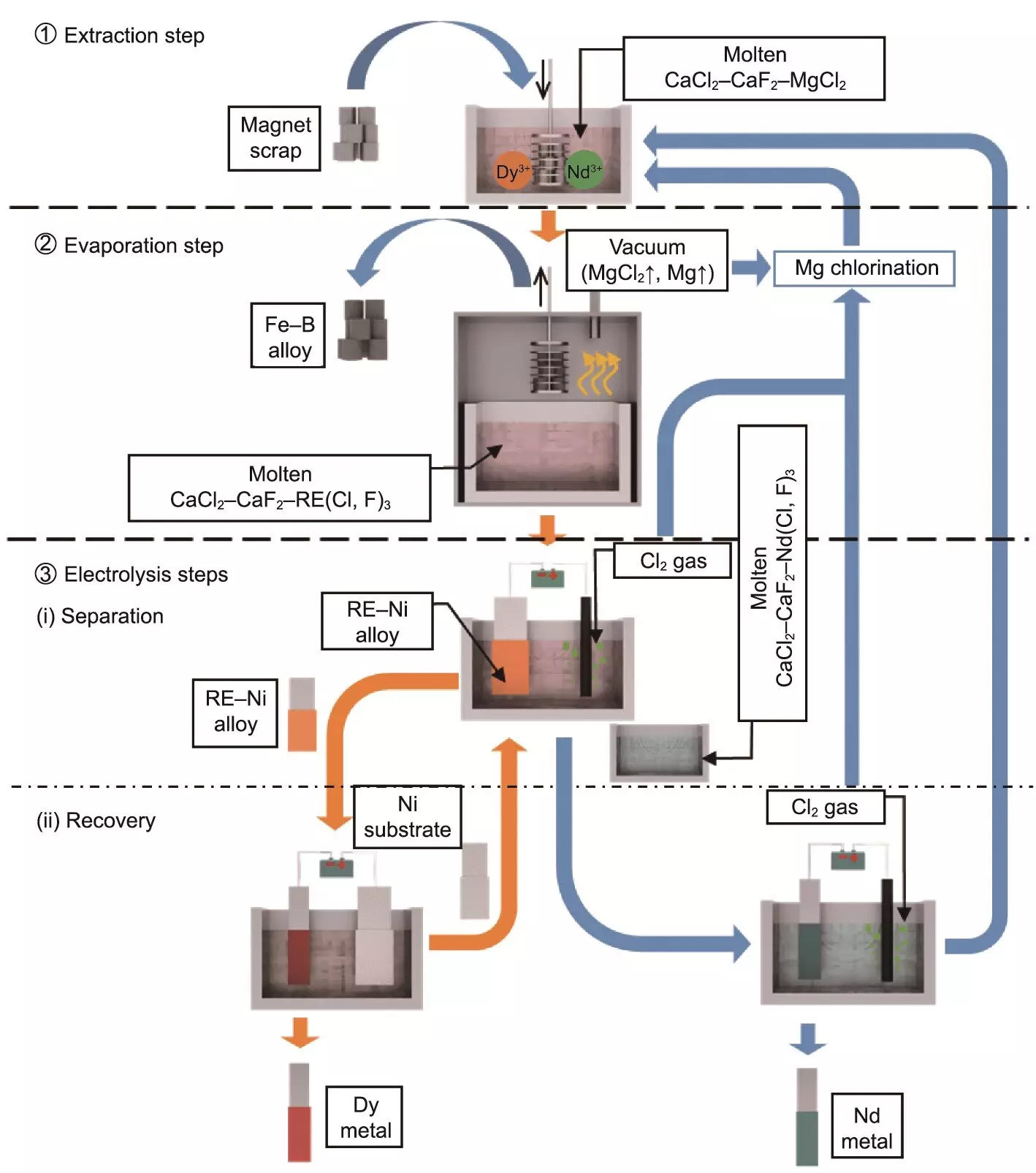As the world pivots towards electrification and sustainable energy solutions, the demand for rare-earth elements (REEs) has surged, making efficient recycling methods increasingly essential. A groundbreaking study from Kyoto University introduces an innovative approach called the selective extraction–evaporation–electrolysis (SEEE) process, which presents a promising leap in recycling technologies. Published in the journal Engineering, this research highlights a robust method for reclaiming critical materials like neodymium (Nd) and dysprosium (Dy) from discarded magnets, a move that could significantly impact the green technology landscape.
REEs play a vital role in the manufacture of permanent magnets, which are integral to a variety of energy-efficient devices, including electric vehicles (EVs) and wind turbines. The shift towards greener technologies amplifies the need for a sustainable supply chain of these rare materials. However, conventional recycling methods for Nd and Dy often present significant challenges: they are energy-intensive, complex, and can inflict considerable environmental damage. Addressing this issue is paramount for sustainable development, as the lifecycle of REEs must be managed more effectively to minimize ecological footprints.
The Innovative SEEE Process
At the helm of this research was Professor Toshiyuki Nohira, whose team developed the SEEE process as a more efficient alternative to traditional methods. The SEEE approach consists of three core phases:
1. **Selective Extraction:** In the first phase, a mixture of molten salts—most notably calcium chloride (CaCl2) and magnesium chloride (MgCl2)—is utilized to extract REEs from magnet waste. Adding calcium fluoride (CaF2) plays a crucial role in minimizing evaporation losses during the extraction process and enhancing overall extraction efficiency.
2. **Selective Evaporation:** The second phase focuses on refining the concentration of REEs by eliminating excess extraction agents and impurities. This results in a more concentrated solution of the desired elements.
3. **Selective Electrolysis:** Finally, the recovered REEs undergo an electrochemical separation based on their individual electrochemical potentials. This sophisticated step yields high-purity metals crucial for subsequent industrial applications. Notably, the results demonstrate an impressive recovery rate of 96% for Nd and 91% for Dy, both surpassing 90% purity.
Environmental and Economic Implications
The SEEE process exhibits tremendous potential not only in terms of efficiency but also in its environmental considerations. As industries and consumers increasingly lean towards electric mobility and renewable energy sources, this method could alleviate dependence on virgin mining operations, which are often associated with significant ecological disruption. Therefore, the SEEE process aligns well with global sustainability efforts, presenting an avenue to provide a steady supply of REEs while reducing the detrimental impacts of mining activities.
Moreover, the applications of the SEEE process extend far beyond the reciclability of Nd magnets. The versatility of this method opens doors for potential use in diverse sectors, including nuclear fuel reprocessing. By broadening the horizons of its application, this innovation stands to reshape several industries reliant on rare-earth elements.
Despite the promising results of the SEEE process, the researchers acknowledge that more rigorous investigations are necessary to scale these findings for industrial use. The fine-tuning of the technology is imperative before it can be adopted widely within the recycling industry. Nonetheless, the initial outcomes signal a significant advancement in material recovery methods.
The innovation presented by this Kyoto University research emphasizes the essential role of advanced technologies in addressing environmental challenges. As society grapples with the urgency of transitioning to carbon-neutral technologies, methods like SEEE provide vital pathways towards minimizing waste and maximizing resource recovery in an increasingly energy-conscious world.
The selective extraction–evaporation–electrolysis process represents a noteworthy advancement in the recycling of rare-earth elements, one that could fundamentally transform the availability of critical materials in green technologies. As global demand for sustainable energy solutions continues to escalate, research endeavors like this will undoubtedly be pivotal in crafting a more eco-friendly future.


Leave a Reply